Are you building a new patio or outdoor living center and need to select pavers?
Choosing the right pavers for your outdoor space doesn’t have to be complicated. In this article, the team here at Coastal Hardscapes of Savannah will help you understand the different materials, shapes, sizes, and colors available when selecting pavers so you can make the best choice for your needs.
Quick Paver Guide:
Below are the simple steps to selecting the best pavers for your home:
- Pick a Material. You should choose the right paver material (concrete, natural stone, or brick) based on your budget, aesthetic preferences, and specific outdoor needs.
- Pick the shape(s). Consider paver shape and size to enhance your patio’s look; mixing different shapes can create unique patterns and visual interest.
- Select a color(s). Do you want natural stone colors or sand colors? Perhaps you want a dark brown border around your lighter-colored pavers. You have a variety of colors to choose from!
- Build a budget. Budgeting for both materials and installation is crucial; professional help is ideal for the best results.
If you need help identifying the ideal pavers for your project, you can work with out design team and receive expert advice right here:
Step 1: Understanding Different Paver Materials
Selecting the right paver material is the foundation of a successful patio project in Savannah, Pooler, The Islands, and the surrounding areas. Here at Coastal Hardscapes, we provide pavers that are available in various paving materials each of which have pros and cons.
The main types of paver materials include:
- Concrete,
- Natural stone, and
- Brick.
Travertine, flagstone, and other materials are less common but exist and are sometimes considered premium pavers (though they are natural stones). When selecting a paver for your outdoor living center, you must consider all factors, such as color, texture, pattern, and functionality. Keep in mind that durability is essential, and each paver material can have different pros and cons, which we list the specifics of below:
1. Concrete Pavers
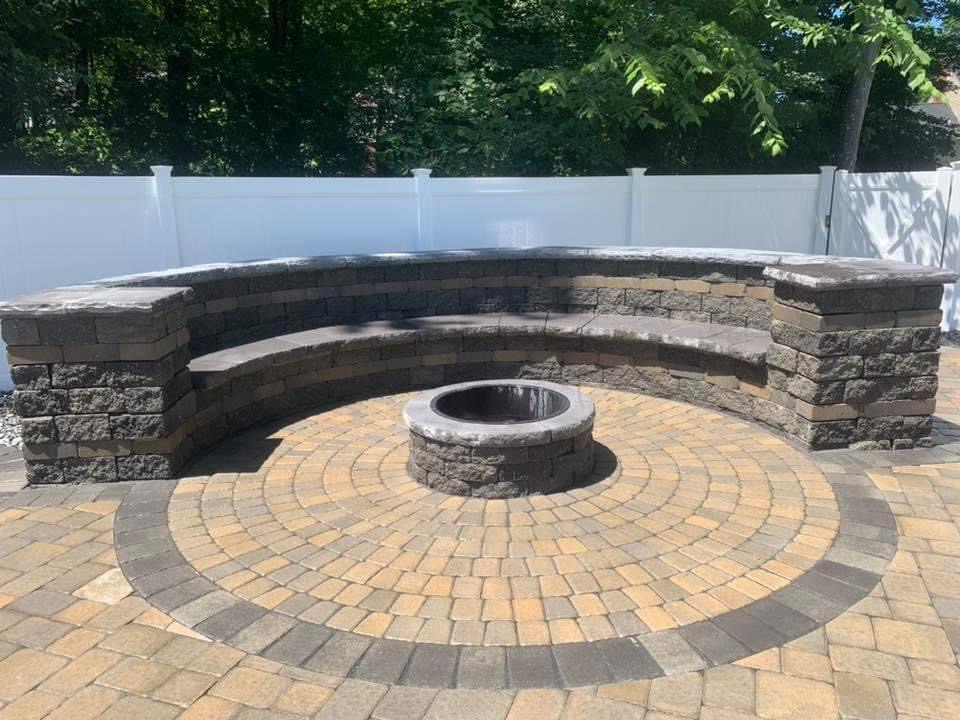
Concrete pavers are a popular choice for many homeowners due to their versatility and affordability.
Features:
- Weather-resistant
- Numerous shapes, sizes, and colors allow for a high degree of customization in your outdoor living space.
- Cost-effectiveness compared to other materials
- Durable solution that can withstand harsh weather conditions but may require re-sealing every three to five years
Whether you’re looking to create a traditional cobble look or a sleek, modern design, concrete pavers can meet your needs. Affordability makes them a practical option for those looking to balance aesthetics with budget considerations.
2. Natural Stone Pavers

Natural stone pavers, such as limestone and travertine, are renowned for their timeless beauty and durability. Travertine pavers, for example, are more incredible on your feet in the hot Savannah sun during summer, making them an exceptional material!
Features:
- Natural, elegant look that blends seamlessly with outdoor environments.
- Travertine pavers, smooth and weather and heat-resistant
- Limestone paving stones are solid and light-colored, often used for edging and creating clean lines.
- Flagstone pavers have slip-resistant surfaces and irregular shapes, adding a rustic charm to any patio.
While natural stone pavers can be more expensive, their distinct appearance and longevity make them a worthwhile investment for many homeowners.
3. Brick Pavers
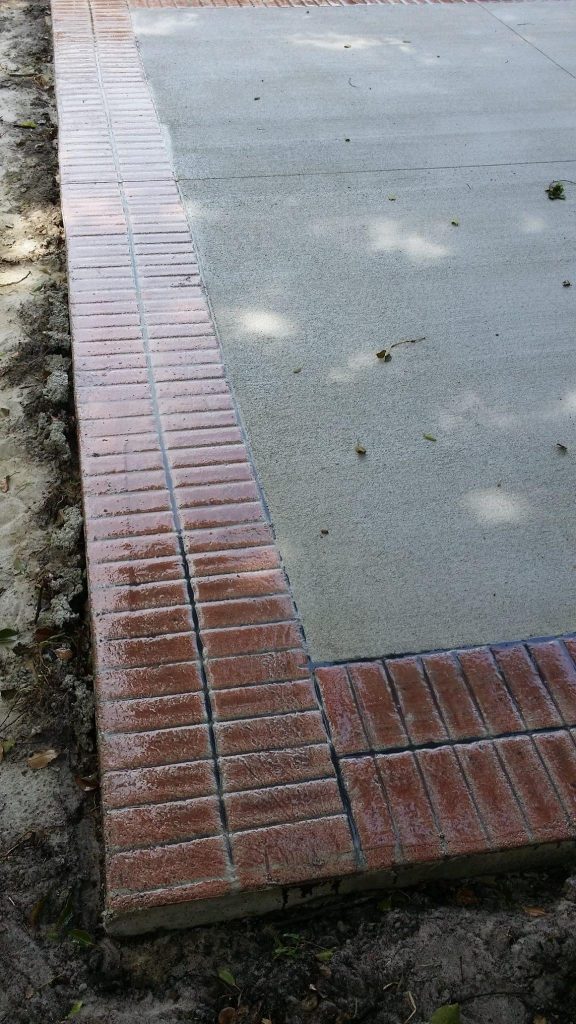
Brick pavers are a classic choice that brings a sense of warmth and tradition to outdoor spaces. Made from clay and shale, these pavers are fired at high temperatures, making them incredibly durable and resistant to stains.
Features:
- They do not absorb water, which enhances their longevity.
- Durability and resistance to stains
- Earthy tones and common shapes such as rectangles and squares,
Brick pavers can be used to create various patterns and designs, adding aesthetic appeal to your brick patios. Their timeless look and robust construction make brick pavers an excellent choice for those seeking a traditional yet durable patio material.
Step 2: Choosing the Right Paver Shape and Size
Once you pick the paver material, an important factor to consider is how you will design your patio or hardscape project. Whether you are building a retaining wall, fireplace, or patio around a pool, the shape and size will depend on your budget.
Keeping that in mind, the shape and size of your pavers can significantly influence the overall look and feel of your patio. Whether you have a large, open space or a cozy, intimate area, the right paver dimensions can enhance the design and functionality of your outdoor living space. Mixing different shapes and sizes can also add visual interest and create unique patterns.
We always recommend that homeowners we work with consider how smooth pavers of different shapes and sizes interact with the available space. For instance, large pavers can make a spacious patio feel even more expansive, while smaller pavers can be ideal for intricate designs in compact areas.
Here is a simple breakdown of different sizes and options:
Large vs. Small Pavers
Large pavers are an excellent choice for creating a sense of spaciousness in larger patio areas. They can enhance the overall appearance of large, open spaces, making them feel more cohesive and grounded. Large pavers also tend to require less installation time and fewer joint lines, contributing to a cleaner, more streamlined look.
On the other hand, small pavers are better suited for detailed, intricate designs and smaller spaces. They offer greater flexibility in layout, allowing you to create complex patterns and detailed borders. However, using small pavers in a confined area can sometimes make the space feel even smaller, so it’s essential to balance the design elements thoughtfully.
Mixing Shapes for Visual Interest
Combining different paver shapes can lead to visually appealing patterns that enhance the aesthetic of your outdoor space. Mixing square and rectangular pavers, for example, can create an Ashlar pattern or a circular design around a firepit, adding depth and character to your patio. These patterns can transform a simple patio into a captivating focal point.
Step 3: Selecting the Perfect Color for Your Paver Project
The color of your pavers plays a crucial role in the overall appearance of your patio. Choosing the right color can enhance the visual appeal and harmony of your outdoor space, making it an inviting area for relaxation and entertainment. Paver colors range from bold reds to subtle browns, each offering a different aesthetic.
When selecting paver colors, consider how they will complement your home’s exterior and the surrounding landscape. The right color choice can create a cohesive look that ties together various outdoor living space elements.
Let’s delve into how to match paver colors with your house and consider environmental factors that might influence your decision.
Matching Pavers to Your House
Harmonizing paver colors with your home’s exterior is essential for creating a cohesive and aesthetically pleasing outdoor space. Drawing inspiration from elements such as the roof and trim can guide your choice of paver colors. For instance, if your roof is dark gray, opting for light gray or muted tones in your pavers can create a balanced and harmonious look.
The trim colors of your house can also influence your paver selection. Matching or complementing these colors can enhance the overall design and ensure that your patio feels like a natural extension of your home. By considering these elements, you can seamlessly integrate your outdoor and indoor spaces.
Considering Environmental Factors
Environmental factors play a significant role in the longevity and appearance of your pavers. In sun-prone areas, lighter colors are advisable as they reflect heat better, keeping the patio cooler. This not only enhances comfort but also helps maintain the pavers’ appearance over time.
Muted colors are less likely to fade in areas exposed to constant sunlight. By considering the environmental conditions, you can select paver colors that will not only look great but also withstand the elements, ensuring a beautiful and durable outdoor space.
Step 4: Budgeting for Your Paver Project
Budgeting is a critical aspect of any paver project. Understanding the costs involved, from materials to installation, will help you plan effectively and avoid unexpected expenses. The cost of materials and labor can vary widely depending on the type of pavers you choose and the complexity of the installation process.
A patio is priced based on square footage and the material you select. For example, a typical 400-square-foot paver patio can cost approximately $8,300, but this can fluctuate based on the specifics of your project. Adding a step up or a lot of curvature in your design means more cutting and more technical labor, thus increasing the cost per square foot. The upside to design is you can match your budget by utilizing an affordable design that looks great!
Let’s break down the costs of paver materials and installation to give you a clearer picture. See our Paver Cost Guide here ⬅️
Cost of Paver Materials
The cost of paver materials varies significantly depending on the type of paver you choose. Concrete pavers are generally the most affordable, ranging from $3 to $6 per square foot. Brick pavers tend to be slightly more expensive, with prices ranging from $4 to $8 per square foot and high-end options reaching up to $20.
Natural stone, while often more expensive, offers a unique aesthetic and durability. Standard stone pavers can cost anywhere from $7 to $16 per square foot. Understanding these cost differences is crucial for effective budgeting and selecting materials that fit your design vision and financial plan.
Installation Costs
Installation costs can vary based on the size and scope of your project. Our hardscape installation services typically average around $6 per square foot for labor. The labor is factored in with the materials for an overall price. Keep in mind that hardscape projects can quickly become challenging and technical. We offer hardscape services with warranties that cover labor and materials, providing peace of mind and ensuring a high-quality finish.
Maintenance and Longevity of Pavers
Maintaining your pavers ensures their longevity and keeps your outdoor space looking its best. Regular maintenance practices such as cleaning, sealing, and repairing can significantly extend the lifespan of your pavers and prevent common issues like staining and shifting.
With proper care, the most durable patio materials, such as porcelain and granite stone, can last for decades. However, since most patios are built with concrete pavers, the maintenance is minimal but can consist of the following:
Sealing and Cleaning
Sealing pavers, especially those exposed to water or colored concrete patios is crucial to prevent staining and extend their lifespan. Natural stone may also require regular sealing to protect against weathering and maintain their appearance. Depending on environmental conditions, power washing is recommended every 3 to 4 years to keep your pavers clean and fresh.
Here at Coastal Hardscapes, we don’t take any shortcuts! By applying polymeric sand to the joints of pavers, we help prevent shifting and inhibit weed growth, contributing to overall maintenance and the stability of your patio.
Repair and Replacement
Repairing and replacing pavers is straightforward and can be done individually without extensive repairs. This makes maintenance manageable and ensures that your patio remains in good condition. Refinishing the joints, known as points, every few years helps maintain the patio’s integrity and stability. This is rare you will need to do this, however, by monitoring the condition of your pavers and addressing any issues promptly, you can ensure that your outdoor space remains in good standing for al long time.
Consulting a Landscape Professional
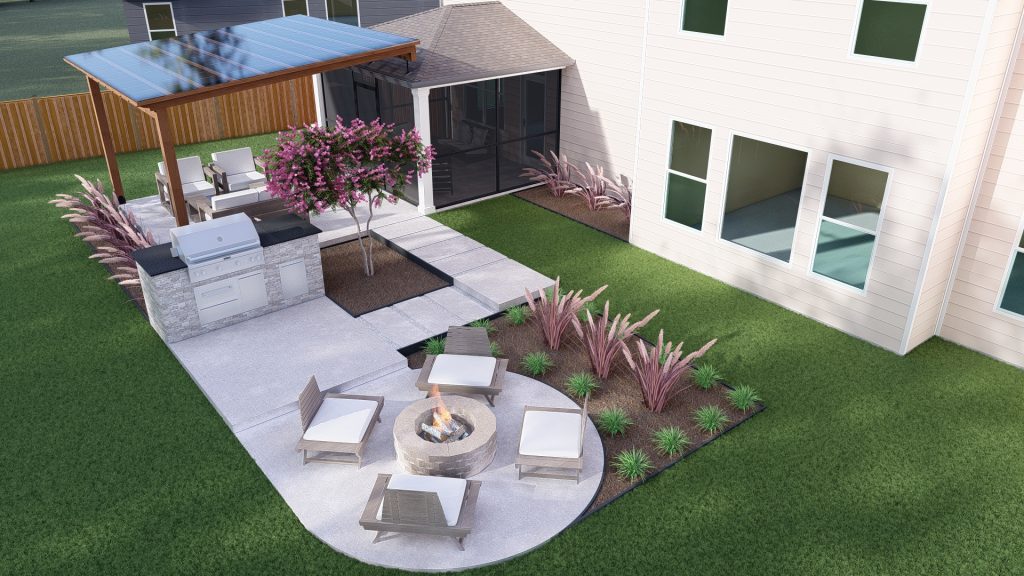
Seeking the guidance of a landscaping company in or near Savannah that offers professional hardscape services is necessary to achieve the best results for your outdoor living space. Working with us can help you navigate through various material choices, ensuring that your selections align with your preferences, budget, and maintenance requirements.
By consulting with Coastal Hardscapes, we can help you enhance the beauty and functionality of your patio, creating a cherished feature of your home. Their expert advice can help you avoid common mistakes and make informed decisions that will benefit your project in the long run.
This professional touch ensures that your outdoor space looks stunning and stands the test of time.
Paver DIY vs. Professional Installation?
When deciding between DIY installation and hiring professionals for your paver project, weighing your options carefully is essential. With professional hardscaping like Coastal Hardscapes, we bring the necessary skills and experience to achieve a high-quality finish and do the heavy lifting. For example, site preparation alone is a huge undertaking for the average homeowner. Preparing the paver patio base with the proper materials and labor can take a professional crew 2-3 days alone; imagine a homeowner doing it on their own on a weekend. This could take months!
The cost factor usually motivates homeowners to go the DIY route. However, you must consider the long-term results of your patio and potential issues. Ultimately, the decision should be based on your confidence in your abilities, the complexity of the project, and your budget.
The Verdict –
By now you know more about selecting pavers for your patio or hardscape project. Whether you choose to use natural stone or concrete pavers, the best selection is the one you can enjoy and afford! While brick patios are far less common, many homeowners elect to utilize concrete pavers because of their functionality, durability, and the variety of looks you can create!
Remember, pick a paver, pick a color, and then let us help you design and build your patio! We can increase the functionality of your outdoor space whether aou are a resident or business owner of Savannah, Pooler, Richmond Hill, or the surrounding areas!
Frequently Asked Questions
1. What are the main types of paver materials?
Concrete pavers, natural stone pavers, and brick pavers are your main options, each bringing its own charm and advantages. Choosing the right one depends on the look and durability you desire for your project.
2. How do I choose the right color pavers for my Coastal GA home?
To choose the right color for your pavers, harmonize them with your home’s exterior elements, like the roof and trim, and consider environmental factors like sun exposure. This approach will ensure a cohesive and appealing look.
3. What are the cost ranges for different paver materials?
If you’re considering paver materials, concrete pavers usually range from $3 to $6 per square foot, while brick pavers are priced between $4 and $8, and natural stone pavers can go from $7 to $16 per square foot. This gives you a good idea of what to expect regarding budget!
4. How often should I seal my pavers?
You should seal your pavers every three to five years to keep them protected and looking great. Regular sealing helps prevent weathering, especially for colored or water-exposed concrete and natural stone.
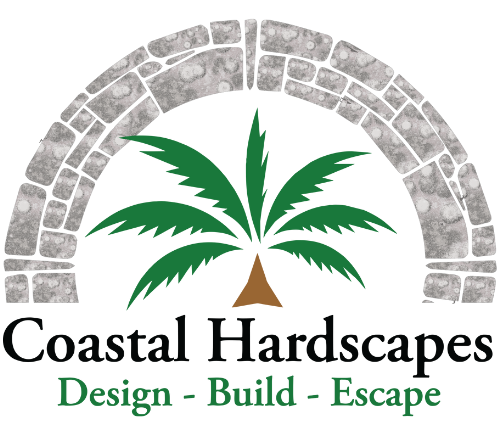
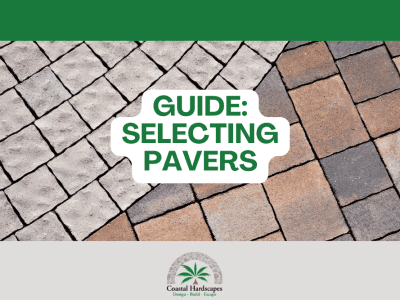
 What to Know About Savannah Retaining Walls & 8 Types!
What to Know About Savannah Retaining Walls & 8 Types!
Leave a Reply